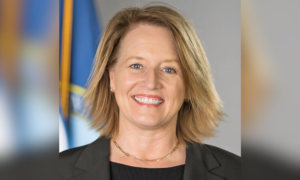Beat the clock: Update on the national flood program

Editor’s Note: This article has been updated to show remarks incorrectly attributed to IBC’s president and CEO Celyeste Power were actually the remarks of IBC chairman Christian Fournier. CU apologizes for the error.
Provincial politics and the timing of a federal election could possibly delay or derail the proposed national flood insurance program if it doesn’t get off the ground before 2025, delegates attending the National Insurance Conference of Canada heard in Vancouver Tuesday.
“That’s a challenge,” Insurance Bureau of Canada board chairman Christian Fournier replied, when asked what he’d like to see to move the flood backstop file forward over the next six to 12 months. “I guess we have timing and politics playing against us, so we need to go fast.”
A panel of experts sounded the alarm during their update on the National Flood Program.
Conceived as a federal government reinsurance backstop to help make flood insurance available and affordable for people living in high-risk flood areas, the National Flood Insurance Program has been the upshot of 10 years of negotiations between the federal government and the P&C insurance industry.
In the 2024 Federal Budget, the Liberals pledged $15 million for the Canada Mortgage and Housing Corporation to “establish a national flood insurance program, to be developed in partnership with provinces, territories, and the insurance industry.”
But the uncertain timing of the next federal election is playing havoc with that promise.
The next federal election is slated for Oct. 20, 2025, but it remains to be seen if Justin Trudeau’s minority Liberal government will survive that long. The NDP announced it has rescinded its “supply and confidence” agreement, which propped up the minority government in exchange for the federal government moving forward on some key NDP initiatives such as, for example, a national pharmacare program and affordable housing.
The Trudeau government Wednesday survived a non-confidence motion put forward by the Conservative opposition Tuesday. The Liberals received the backing of the NDP and Bloc Québécois to keep the government in power.
That said, CP24 reported today the Bloc Québécois “is giving the Liberal government a deadline of Oct. 29 to pass two pieces of legislation related to old-age security and supply management.”
Certainly, the political maneuvering puts the timing of the federal election in doubt.
Also in the news: A different type of auto fraud
In the meantime, Fournier observed the provincial governments need to undertake certain tasks to help establish the federal flood backstop.
“The industry is truly on board [with the National Flood Program],” he said. “The federal government, I feel, is truly on board. I think [for] the provinces, it’s not that clear to me. I think we need to do more work on that.
“We don’t want that to become a hurdle at the end, where we’ve done everything right, and that’s the hurdle we stumble on. So, to me, that’s also something we need to be paying attention to.”
NICC panellist Matt Godsoe is director of the resilience and economics integration division of Public Safety Canada. He observed some areas of the proposed flood program would touch on areas under provincial purview, such as housing availability, occupancy, tenancy, etc. Plus, the subsidy program would look for common definitions of the water peril itself — for example, definitions of pluvial, fluvial and coastal flooding — between the federal, provincial and territorial governments.
Godsoe was asked about the timing of the program’s rollout, if all things fell into place.
“If we look forward now to the next six to 12 months, what is going to happen is, effectively, the final version of the proposal needs to go into government for consideration. The government is then going to take a decision, and in a scenario in which the government decides that it is going to proceed with the work, then there are three important steps.
“The first is that policy decision on behalf of government.
“The second is a funding decision would be communicated; if it went on a standard course, probably through Budget 2025, which normally comes out in February or March of next year. At that point, the details of the program would largely be set and available, and we could start to think through what implementation would look like.
“There would be a final step of dotting all I’s and crossing T’s and coming back with the terms and conditions of the program sometime in the couple of months following that announcement the budget. And so, we’d be looking at a time when hopefully we could work with [the Canadian P&C insurance industry] to be ready to issue policies in the year 2026-27.”
But a lot could happen between now and then, he added.
“There are all kinds of potential political things that could happen, both in the federal government and provinces and territories, that could change that [timing],” he said. “There are ways things could be expedited or slowed down, depending on events we see happening either in Canada or around the world.”
Feature image courtesy of iStock.ca/shaunl






